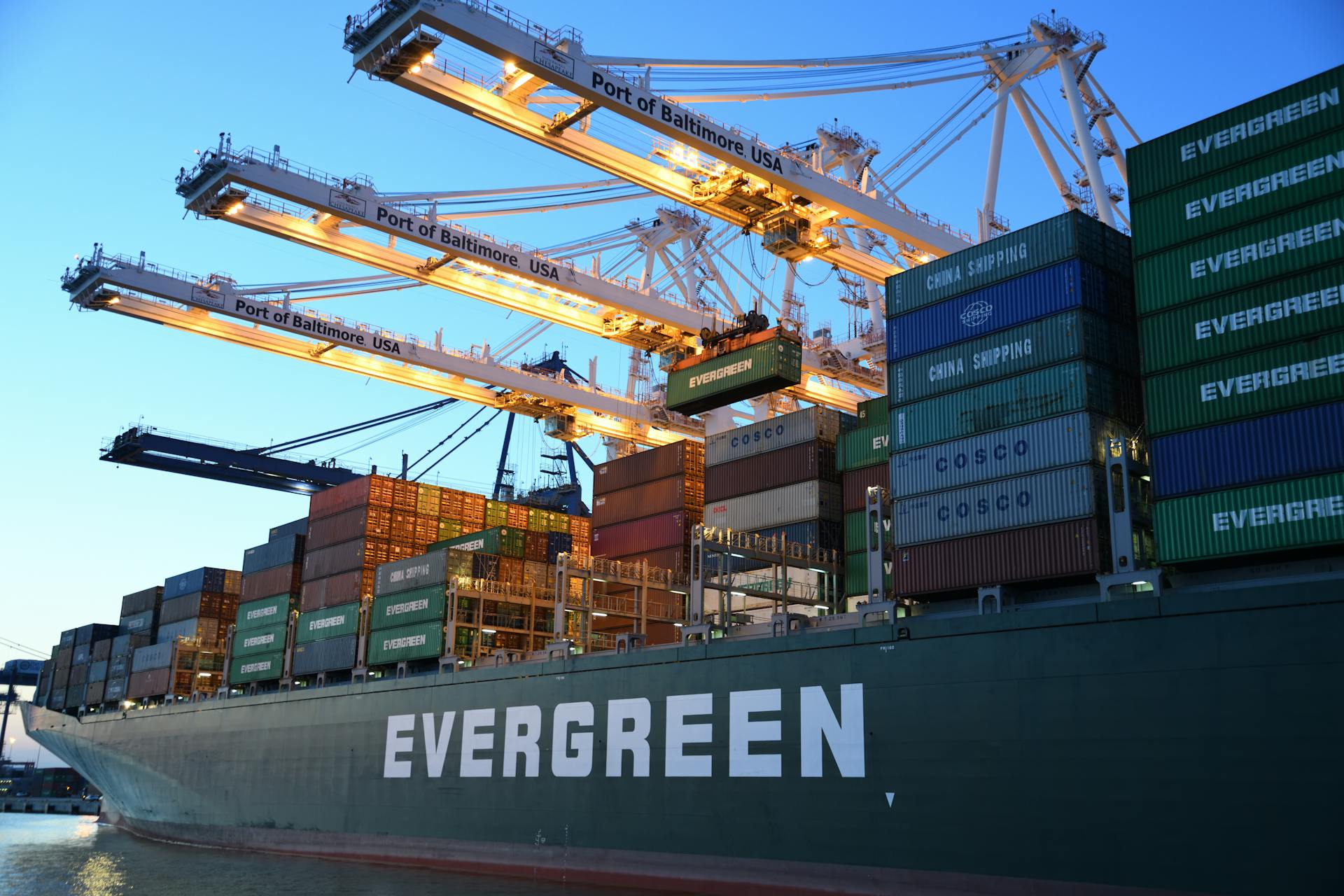
Ship agents play a vital role in facilitating smooth logistics and operations for shipping companies. They handle a multitude of tasks, from coordinating cargo movements to ensuring compliance with regulations.
Effective software can significantly simplify these tasks, saving time and reducing errors. For instance, a ship agent can use software to generate and send electronic bills of lading, reducing paperwork and increasing efficiency.
A good software for ship agents should have features such as automated reporting and data analysis, which can help identify trends and areas for improvement. This can be particularly useful for large shipping companies with multiple agents and vessels.
A different take: Air Freight Forwarding Software
What is Ship Agent Software?
Ship agent software is a platform that helps manage vessel arrivals, cargo operations, and documentation related to port calls. It automates processes, allowing you to focus on the bigger picture.
The system deals with most types of international messages like UN-EDIFACT, XML, ANSI X12, and Flat Files. This enables seamless communication with shipping lines, customs authorities, and other shipping agents.
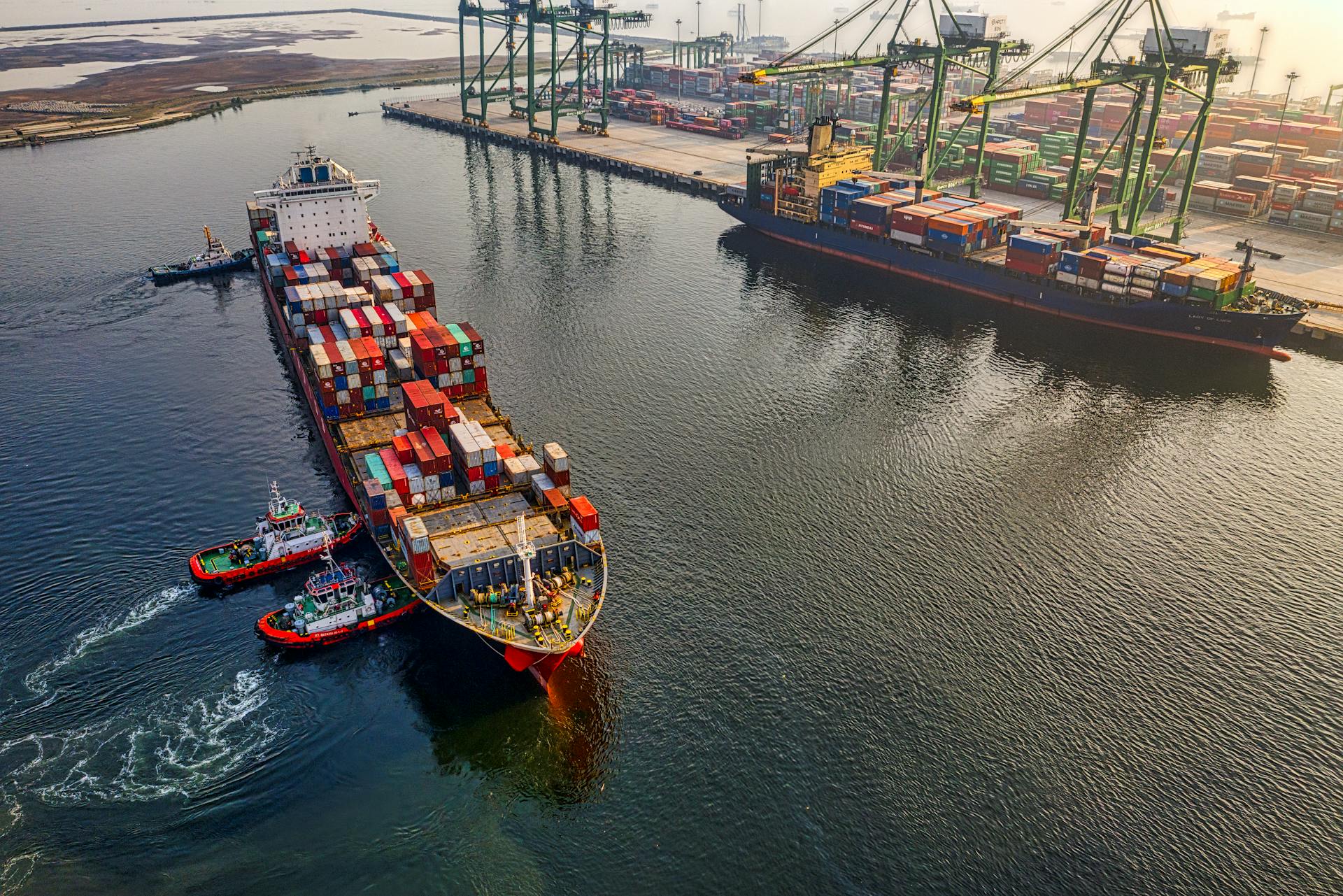
Port agent software is a type of ship agent software that specifically helps manage vessel arrivals, cargo operations, and documentation. It's designed to streamline port call operations, reducing the risk of human error and ensuring smooth invoicing and contracting.
Some common features of port agent software include:
- Port Documentation: Automatically generated documents for each vessel’s port call, including proforma disbursement accounts (PDAs) and final disbursement accounts (FDAs).
- Vessel Tracking: Provides real-time updates on vessel status, keeping all parties informed.
- Vendor Management: Organizes contracts, communications, and services with vendors, preventing miscommunication and missed deadlines.
- Service Request Management: Tracks and fulfills service requests, ensuring operational needs are addressed efficiently.
- Cost Management: Monitors expenses related to port calls, offering insight into resource allocation.
- Disbursement Accounting: Automates the creation of PDAs and FDAs, providing transparent expense tracking.
- Port Call Management: Combines all aspects of port call operations, from scheduling vessels to managing cargo logistics.
Ship agent software also allows for the exchange of import and export manifests with shipping lines or other shipping agents. This is done electronically, reducing the need for manual tracking and phone calls.
Readers also liked: B Pallets
Choosing the Right Agent Software
As a vessel agent, you need a platform that addresses the core functions of port call management and simplifies your daily tasks. Base stands out from the rest as it's designed specifically by folks who work in the maritime industry with the needs of vessel agents in mind.
Base is different than other agency software in several key ways. It's designed specifically for vessel agents, making it a more tailored solution. Base handles core functions of port call management, making it a one-stop-shop for your needs.
Cloud-based software like CloudWadi Shipping Agency Software is a great option for shipping agencies of global shipping lines. It eliminates the need to set up an IT infrastructure, making it a convenient and easy-to-use solution.
For another approach, see: Ship Agents
Challenges Faced by Agents

Manual processes can add complexity to port call management, often leading to delays and errors.
Handling port calls involves juggling multiple responsibilities, including vessel tracking, cargo operations, compliance, and communication.
Relying on manual processes can be frustrating for clients, who expect a smoother experience.
With Base, vessel agents can ease through workflows and reduce manual tasks, making the process more efficient.
Base integrates operational, financial, and communication tools into one cohesive platform, simplifying the entire port call management process.
Take a look at this: Suny Maritime International Transportation Management
Which Agent Should I Use?
When choosing an agent software, consider what features are essential to your daily tasks as a vessel agent. Base stands out from the rest because it's designed specifically by people who work in the maritime industry.
Base is designed with the needs of vessel agents in mind, unlike other agency software. This means it's tailored to address the core functions of port call management.
As a vessel agent, you need a platform that simplifies your daily tasks. Base is that platform, offering features that go above and beyond the basics.
For your interest: Customs Clearance Software
Customizable and Scalable
When choosing agent software, it's essential to consider customization and scalability. CloudWadi Shipping Agency Software is designed to be customizable and scalable to suit your business needs.
Base can be tailored to fit your specific workflows and needs, making it an ideal choice for both small agencies and large port management companies. Its flexibility allows it to adapt to unique demands.
The system can handle complex, multi-vessel operations, and its scalability means it can grow with your business. This is particularly useful for port agencies that need to manage a large volume of shipments.
With Base, you have the control to customize the software to your business, unlike one-size-fits-all solutions. This means you can focus on your core operations without worrying about the software holding you back.
You might enjoy: Port of Long Beach Transportation
Key Features of Agent Software
One of the standout features of agent software is its ability to manage tariffs with diverse pricing structures. This is made possible through the multimodal tariff database module.

You can efficiently manage tariffs from various vendors, including line agents, rail operators, and transporters. This is especially useful when dealing with complex pricing structures.
The software allows you to maintain single tariffs even for multi-modal rates, making it easier to keep track of multiple pricing options. This can save you a significant amount of time and reduce the risk of errors.
You can define dynamic groupings like port, country, or trade for tariff entry, making it easier to organize and categorize your tariffs. This can be particularly useful when dealing with international shipments.
Tariffs can be maintained based on conditions or formulae, giving you a high degree of flexibility when it comes to pricing. This can be especially useful when dealing with complex pricing structures or special promotions.
The software also allows you to download tariff data using predefined Excel formats, making it easy to share or import data into other systems. This can be a huge time-saver and reduce the risk of errors.
Here are some of the key features of the multimodal tariff database module:
- Manage tariffs from various vendors (line agents, rail operators, transporters, etc.).
- Maintain single tariffs even for multi-modal rates.
- Define dynamic groupings like port, country, or trade for tariff entry.
- Maintain Tariff based on Conditions/Formulae.
- Download tariff data using predefined Excel formats.
- Create/Edit/Query/Approve tariffs from a single program.
- Attach multiple documents.
Vendor and Logistics Management

Vendor and Logistics Management is a crucial aspect of software for ship agents. Effective vendor management ensures that all necessary documents and information are up-to-date and easily accessible.
Ship agents need to manage a vast network of vendors, including stevedores, terminal operators, and other service providers. This can be a complex and time-consuming task.
Automated vendor management systems can help streamline this process by tracking vendor performance, managing contracts, and facilitating communication. For example, the system can automatically send notifications to vendors when a vessel is scheduled to arrive.
Ship agents can also use logistics management tools to track the movement of cargo and vessels. This helps ensure that all cargo is delivered on time and in the correct condition.
According to industry reports, the use of logistics management systems can reduce cargo delays by up to 30%. This can result in significant cost savings for ship agents and their clients.
Worth a look: Independent Ship Agents
Automation and Compliance
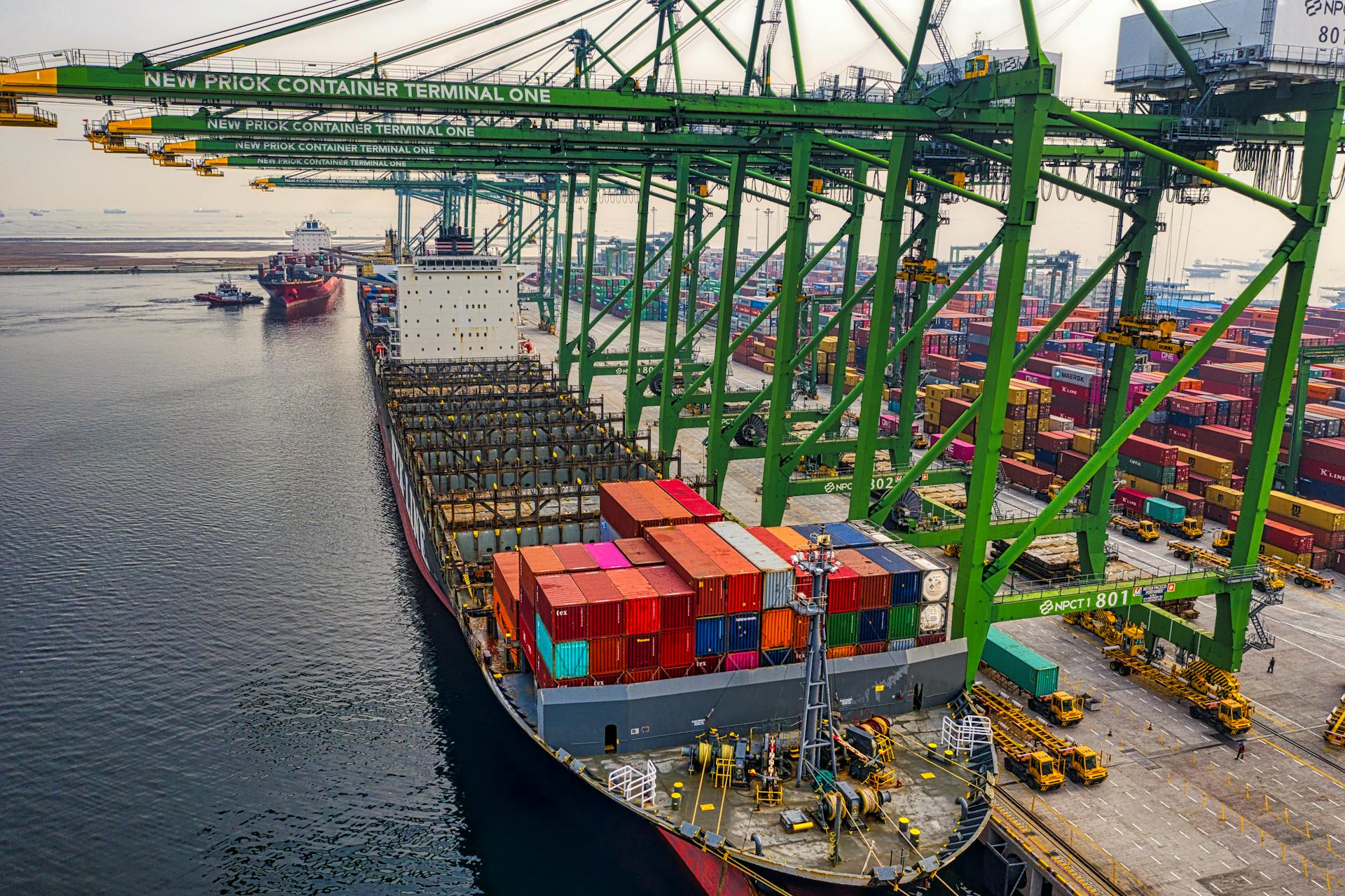
Automation can greatly simplify your work as a ship agent, and Base is a great example of this. With built-in automated invoicing and tracking tools, you can eliminate manual errors and improve accuracy.
Base connects every aspect of the port call, from services rendered to invoicing, so you can monitor cash flow in real time and avoid revenue loss. This means you can focus on other important tasks, knowing that your financials are accurate and up-to-date.
PortPal also leverages AI to automate tasks, such as extracting information from emails and arranging crew change services automatically. This helps reduce manual, redundant, and repetitive tasks, freeing up your time to focus on more strategic activities.
Additional reading: Moving Companies & Services
Automation of Facts Statement
Automation of Facts Statements has revolutionized the way we document critical events during a vessel's stay. With Base, you can generate detailed Statements of Facts with ease, ensuring accuracy and speed.
Manual errors are eliminated, and the creation of essential reports is significantly improved. This is because Base automates the process, freeing up time for more important tasks.

Base's Statement of Facts Automation feature is designed to make documentation a breeze. By automating this process, you can ensure that every critical event is accurately documented, reducing the risk of errors and discrepancies.
Port agents and managers can now focus on more strategic tasks, such as managing port operations and coordinating with stakeholders. This is made possible by Base's automation capabilities, which streamline documentation and reporting processes.
With Base, you can trust that your Statements of Facts are accurate and up-to-date. This is a significant improvement over manual processes, which are prone to errors and can lead to delays and complications.
Additional reading: Ncl Cruise Parking Miami
AI Powered
Automation and AI are revolutionizing the way we manage port operations. One platform, Base, integrates operational, financial, and communication tools into one cohesive platform to simplify the entire port call management process.
PortPal is an AI-powered solution that's obsessed with reducing manual, redundant, and repetitive tasks. It leverages AI to extract information from emails and arrange crew change services automatically.
For more insights, see: Ai Trucking Companies

Vessel tracking, cargo operations, compliance, and communication are just some of the tasks that can be streamlined with AI-powered port agent software. Base offers a solution that simplifies these tasks and reduces errors and delays.
With AI, port agents can maintain real-time communication with stakeholders and ease through workflows. This means fewer manual tasks and more time to focus on other important aspects of port operations.
AI-powered tools like Base and PortPal are designed to make port operations more efficient and effective. They automate tasks, reduce errors, and increase productivity, making them a valuable investment for any port agent or manager.
Shipping and Operations
Port operations rely heavily on technology, with port agent software automating tasks such as vessel arrivals, cargo handling, and customs documentation.
This type of software improves accuracy and speed in operations, reducing the need for physical paperwork and manual communication.
Automated cargo handling equipment, such as cranes and conveyors, improves loading and unloading efficiency.
Readers also liked: Ship Handling
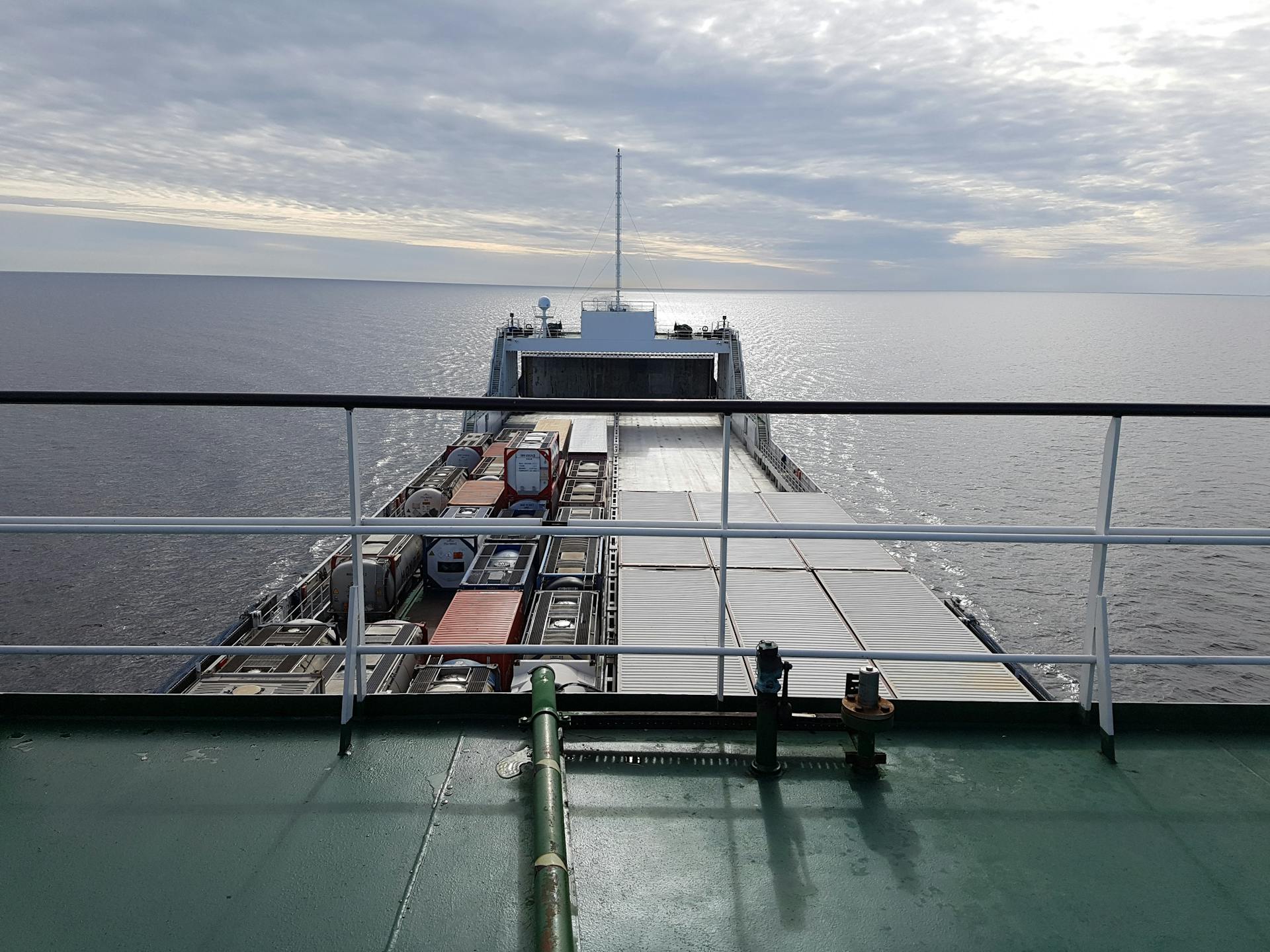
GPS and Automatic Identification Systems (AIS) provide real-time vessel tracking, aiding in better planning and scheduling.
Here are some key features of port operations software:
- Execute voyage changes.
- Accept containers via file upload.
- Capture Dynamic Information based on cargo types (Container, RORO, BULK cargo types)
- Perform Mass status updates.
A centralized dashboard provides a comprehensive overview of all port call operations, making it simple to stay organized and up to date.
Real-Time Collaboration
Real-Time Collaboration is key to a successful port call. Effective communication can make all the difference in getting goods from one place to another efficiently.
Base excels at real-time collaboration with its tools that allow you to connect with vessel operators, port authorities, customs agents, and suppliers instantly. This ensures everyone is on the same page, cutting down on delays caused by miscommunication.
Streamlining communication is crucial in port operations. By using real-time collaboration tools, you can send messages, share documents, and provide status updates in real time.
Here are some benefits of real-time collaboration in port operations:
- Reduces delays caused by miscommunication
- Ensures everyone is on the same page
- Streamlines communication and improves efficiency
With real-time collaboration, you can execute voyage changes, accept containers via file upload, capture dynamic information based on cargo types, and perform mass status updates. This is especially useful in situations where time is of the essence.
In modern port operations, technology plays a crucial role. Real-time collaboration tools like Base are just one example of how technology can improve efficiency and accuracy in port operations.
Discover more: Freight Technology
Crew Change Management

Crew Change Management is a crucial aspect of shipping and operations, and it's amazing how far technology has come in streamlining this process.
With automated actions and services tools, you can manage both large and small crew changes seamlessly. This means that what once took hours can now be done in just a few minutes.
Our clients have reported completing crew changes of 20 crew members in just 20 minutes, a significant reduction from the 2 hours it used to take.
Shipping Management System
A shipping management system is a must-have for any shipping company looking to streamline operations and improve efficiency. It's a software that automates many tasks, such as vessel arrivals, cargo handling, customs clearance, and invoicing.
Port agent software is a key component of a shipping management system, managing everything from vessel arrivals to cargo handling, customs documentation, and invoicing. It reduces the need for physical paperwork and manual communication, improving accuracy and speed in operations.
A unique perspective: Customs Clearance Status Updated.
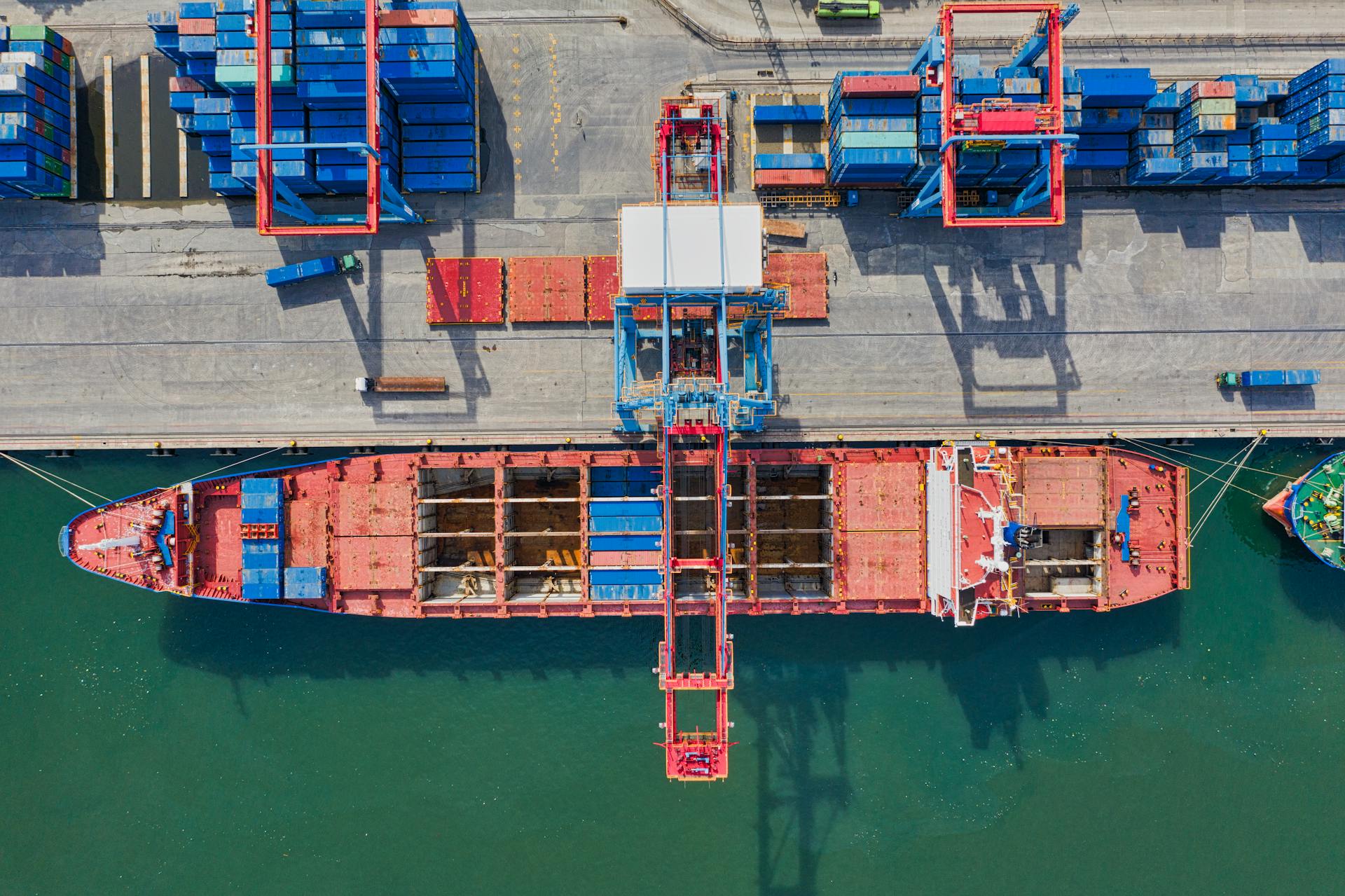
Cloud-based shipping software, like CloudWadi, allows shipping agencies to manage their system without setting up an IT infrastructure. It handles import and export B/Ls, follows up on container movements, and issues customer invoices.
The system also provides a centralized dashboard for real-time management, giving a comprehensive overview of all port call operations in one place. Whether tracking vessel arrivals, managing crew changes, or handling customs paperwork, everything is easily accessible.
Automated cargo handling equipment, such as cranes and conveyors, improves loading and unloading efficiency. GPS and Automatic Identification Systems (AIS) provide real-time vessel tracking, aiding in better planning and scheduling.
Here are some key features of a shipping management system:
- EDI & Import manifest and arrival notification
- Voyage Management
- Shipping orders and Export B/L
- Billing & invoicing and delivery
- Container Control and loading & discharge
- Disbursement
A good shipping management system should also include financial tracking and invoicing capabilities, such as automated invoicing and tracking tools that make it easy to account for every service provided during the port call.
Success Stories and Approaches
Ship agents play a crucial role in facilitating smooth cargo operations, and software can significantly enhance their efficiency.
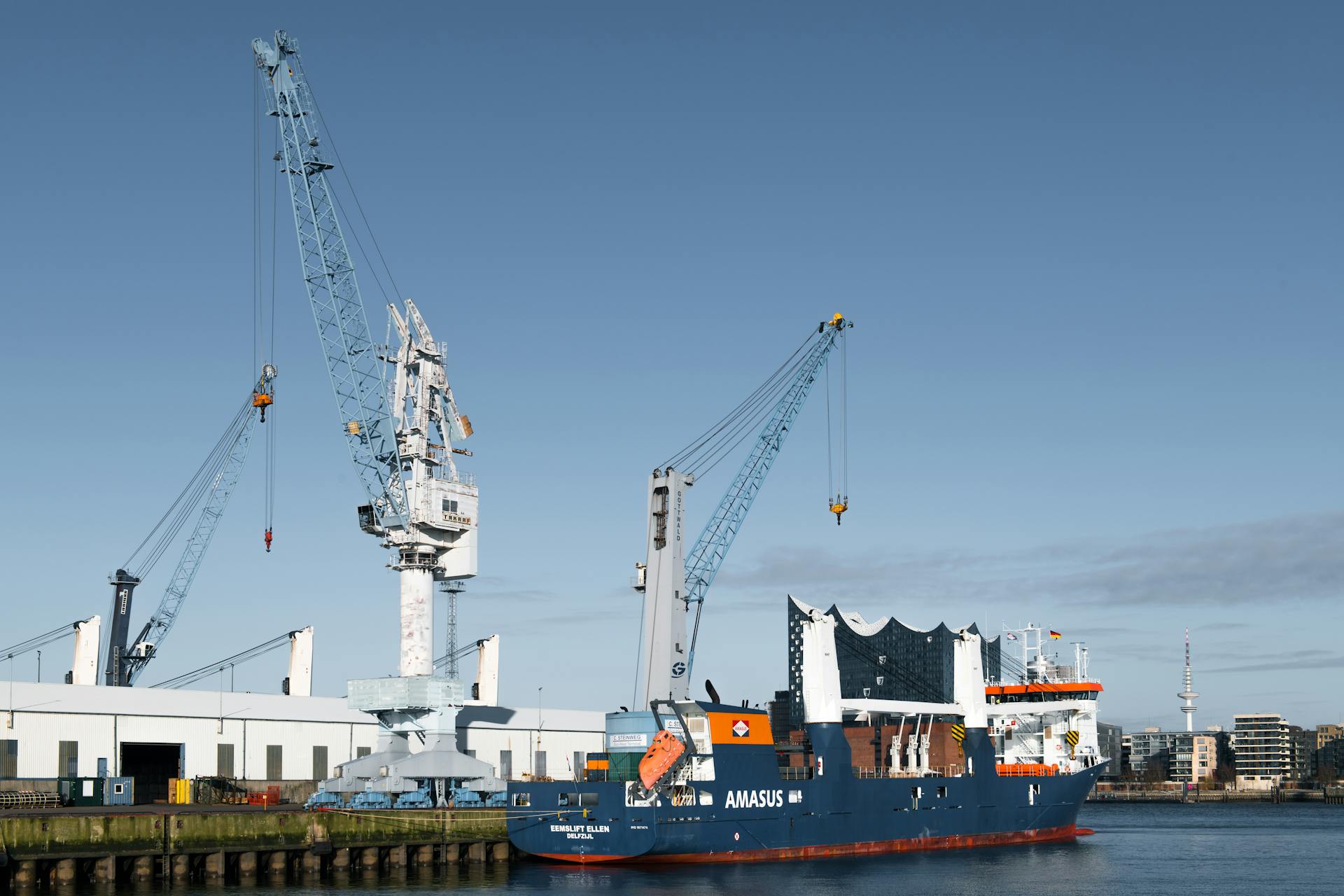
Automated systems can reduce manual errors and increase accuracy in document processing, as seen in the implementation of a software system that reduced errors by 70% at a major shipping port.
By streamlining communication and data exchange between ship agents, shipping lines, and terminals, software can save time and resources.
For instance, a software system that integrated with multiple systems reduced communication time by 50% for a leading ship agency.
Effective software for ship agents should include features such as real-time tracking, automated reporting, and customizable dashboards.
A ship agency using a software with these features reported a 25% increase in productivity due to reduced manual reporting time.
Collaboration and data sharing between stakeholders are also essential for successful cargo operations.
A software system that enabled secure data sharing between ship agents and shipping lines reduced disputes over cargo documentation by 30%.
Intriguing read: 3pl Transportation Management System
Best Practices and Technologies
Port operations are becoming increasingly efficient thanks to the adoption of port agent software, which automates tasks such as vessel arrivals, cargo handling, and customs documentation.
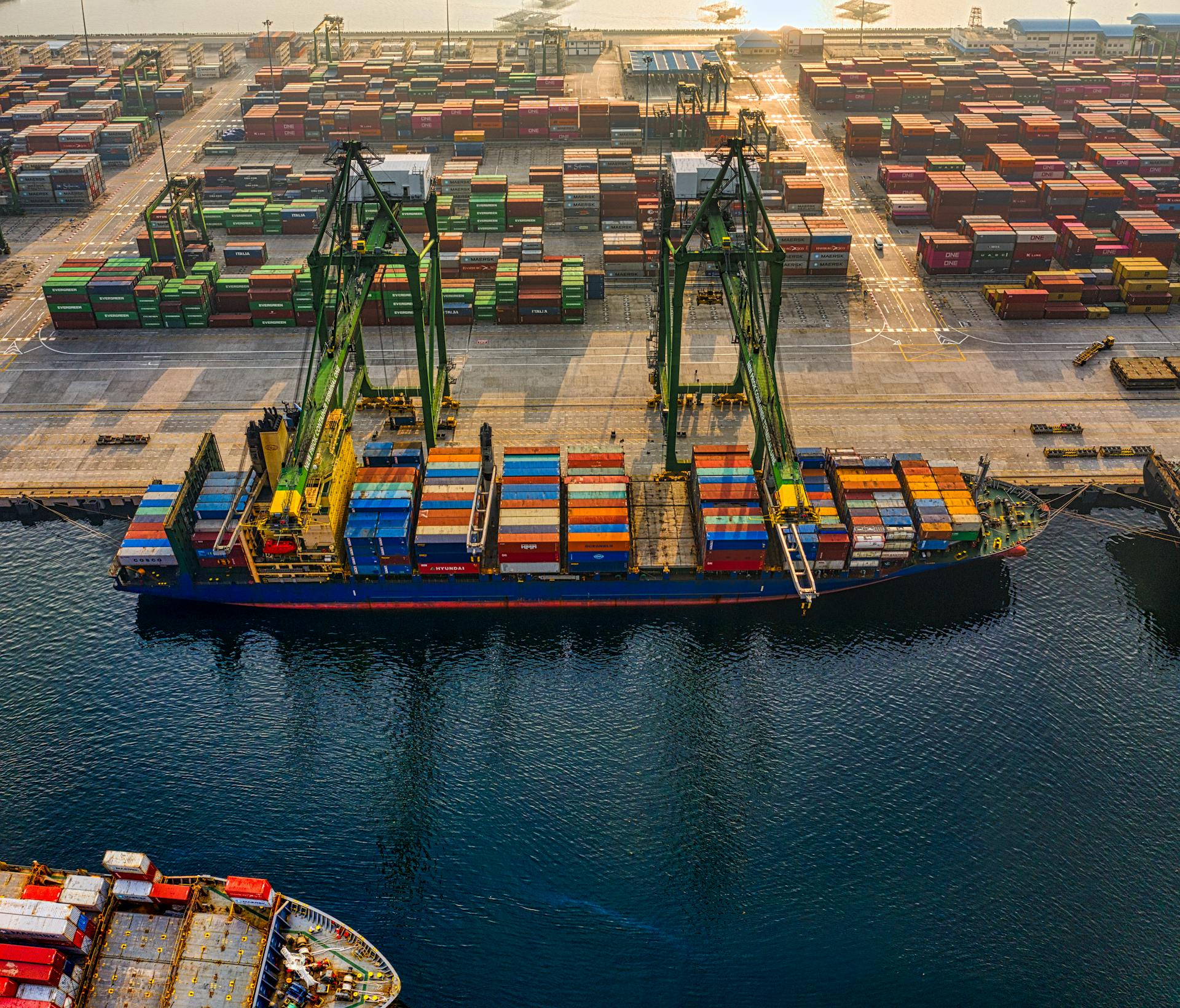
This type of software reduces the need for physical paperwork and manual communication, improving accuracy and speed in operations.
Automated cargo handling equipment, like cranes and conveyors, improves loading and unloading efficiency by a significant margin.
GPS and Automatic Identification Systems (AIS) provide real-time vessel tracking, enabling better planning and scheduling.
Customs and compliance software automates documentation and ensures adherence to regulations, making it a crucial tool for port agents.
Blockchain technology is being increasingly used for secure and transparent tracking of goods, providing an added layer of security.
The Internet of Things (IoT) enables the monitoring of container conditions, port equipment, and other key operational aspects, enhancing overall efficiency.
Automated actions based on information in web applications can update ETAs, arrange crew change services, and generate custom documents, among other tasks.
Port agents can extract relevant information from emails with just one click in their email reader, streamlining their workflow.
Expand your knowledge: Fbi Agents Board Cargo Ship
Order and Documentation Management
Order and documentation management is a crucial aspect of software for ship agents. You can streamline this process with the help of logistics management systems.
On a similar theme: Ship Management

With these systems, you can create orders from approved quotations or tariff checker, making it easier to manage your bookings. This is especially useful when dealing with complex shipments.
You can also manage booking changes, splits, roll overs, and shut outs, ensuring that your bookings are always up to date. This helps prevent errors and reduces the risk of delays.
Here are some key features of order and documentation management in logistics management systems:
- Create orders from approved quotations or tariff checker.
- Manage booking changes, splits, roll overs, and shut outs.
- Compare Revenue vs Cost (role-based access).
Order Entry
Order Entry is a crucial part of managing orders and documentation. It's where you book shipments of various sizes and automate the process with logistics management systems.
With these systems, you can offer a unified platform for booking shipments, making it easier to manage orders. This platform allows you to book multi-modal shipments with a single booking, streamlining the process and reducing errors.
Here are some key features of order entry systems:
- Book multi-modal shipments with a single Booking.
- Streamlined booking, release, acceptance, and confirmation on one screen.
- Approve special container handling (DG and OOG).
- Maintain booking restrictions and validate during booking.
- Create orders from approved quotations or tariff checker.
- Manage booking changes, splits, roll overs, and shut outs.
- Compare Revenue vs Cost (role-based access).
- Handle Console Shipments.
- Access booking-related Daily and MIS reports.
By automating these tasks, you can reduce the risk of errors and increase efficiency in your order entry process.
Documentation - Import

The documentation import process is a crucial step in managing orders and ensuring smooth operations. The ShipLogix system makes it easy to import manifest data through EDI or prepare it manually, giving users the flexibility they need.
To create orders using manifest data, you can simply follow the import procedure and select the relevant options. This ensures that all necessary information is included in the order.
One of the most useful features of ShipLogix is the ability to maintain correctors, both individually and in bulk. This helps to keep your records up-to-date and accurate.
You can also update consignee details in bulk, which is a big time-saver. This ensures that all relevant information is updated correctly.
Generating arrival notices is another important step in the import process. This helps to keep all parties informed and ensures that everything runs smoothly.
To verify and confirm import BLs for collectables, you can simply follow the import procedure and select the relevant options. This ensures that all necessary information is included and verified.
Discover more: Bulk Wine Shipping

The ShipLogix system also allows you to print draft and OBL (BL Print at destination), which is a convenient feature for users who need to print these documents.
Here are some of the key features of the ShipLogix import documentation module:
- Download Manifest data via EDI / prepare manually
- Create Orders using Manifest
- Maintain correctors (single/mass)
- Update Consignee details (mass)
- Generate Arrival Notices
- Ffetch local charges from tariff
- Verify and confirm Import BLs for all collectables
- Print Draft and OBL (BL Print at destination)
- Manage Manifest Voyage changes
- Generate Multiple Delivery Orders for same shipment
- Transshipment Delivery Orders
- Access Cargo/Freight Manifests, Discharge lists, Special cargo manifests DG/OOG/Reefer) manifest
- SOC container list, Manual arrival notice, Empty container return letter, Out turn report, chassis list
Frequently Asked Questions
What are the two types of agents in shipping?
There are two main types of agents in shipping: Port Agents and Cargo Agents, each playing a crucial role in facilitating vessel operations and cargo management. Understanding their roles can help you navigate the complexities of shipping logistics.
What type of software can be installed on your ship?
Our ship management software includes various types of software that can be installed on your ship, such as vessel crewing, unified messaging, and marine accounting systems. These solutions help streamline operations, improve communication, and enhance financial management on board.
Featured Images: pexels.com
